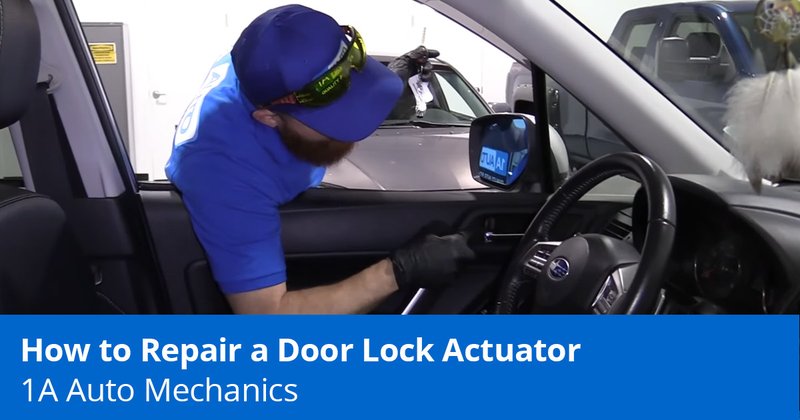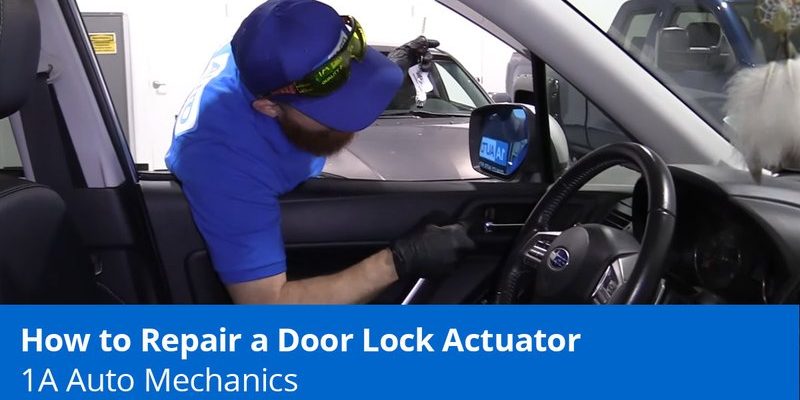
Diagnosing a problem with a door latch’s actuator spring can seem daunting if you’re not handy with tools, but trust me—it’s often simpler than it sounds. Whether you have a standard door latch or a more complex remote-operated one, like those found in modern vehicles or smart home setups, understanding how these parts work is crucial to troubleshooting the issue. Let’s break this down step by step.
What Is an Actuator Spring?
To get started, let’s define what an actuator spring actually is. Essentially, it’s a small coil spring that plays a vital role in the door latch mechanism. This part is responsible for helping the latch return to its original position after you pull the handle or press a button on your remote. Think of it as the muscle behind the latch, giving it the strength to function as designed.
When the actuator spring is in good condition, it ensures that the latch operates smoothly and locks securely. However, if it’s worn down or broken, you might notice the door doesn’t latch fully, which could leave your home vulnerable to unwanted entry. So, if you’ve noticed a snag in your door’s locking mechanism, the actuator spring is the first place to look.
You might be wondering why this matters. Well, a malfunctioning latch can lead to security concerns or accessibility issues, especially if it’s a main entry point. Addressing this sooner rather than later can save you from bigger problems down the road.
Signs Your Actuator Spring Is Failing
So how do you know if your actuator spring needs attention? There are a few telltale signs to watch out for. Here’s a quick rundown:
- Loose or Stiff Handle: If your door handle feels loose or isn’t moving smoothly, it’s a strong indicator that the actuator spring is not functioning properly.
- Door Won’t Latch: If the door fails to latch, even after you’ve pushed it shut, that might mean the spring isn’t providing enough tension.
- Unusual Noises: Listen for any strange sounds—like squeaking or grinding—when you operate the latch. These sounds can suggest that the spring is on its last legs.
- Frequent Jamming: If the latch frequently jams or gets stuck, it’s another sign that something’s off with the actuator spring.
Noticing one or more of these signs? Don’t panic. These issues are typically fixable with a little troubleshooting and perhaps some replacement parts.
How to Inspect the Actuator Spring
Now that you know what to look for, the next step is to inspect the actuator spring. You don’t need to be a professional handyman; just follow these simple steps:
1. Gather Your Tools: You’ll need a screwdriver, flashlight, and possibly a pair of pliers.
2. Remove the Door Handle: Start by unscrewing the handle from the door. Keep the screws in a small container to avoid losing them.
3. Examine the Spring: With the handle off, you should see the actuator spring clearly. Look for any signs of wear, like rust or breaks.
4. Test the Spring: Give the spring a gentle pull. If it feels weak or doesn’t rebound well, it might be time for a replacement.
This inspection process can usually be done in under an hour, and it doesn’t require extensive DIY skills. If you find the spring is damaged, don’t worry. You can easily order a replacement online or pick one up from your local hardware store.
Replacing the Actuator Spring
If your inspection confirms a damaged actuator spring, replacing it is your best bet. Here’s how to do it:
1. Purchase a Replacement: Make sure to get the correct part for your specific door latch model. Check the brand and model number, especially if it’s a remote-operated latch.
2. Remove the Old Spring: Carefully take out the old spring. Depending on your latch type, it may be held in place by clips or screws.
3. Install the New Spring: Place the new spring in the same position as the old one. Ensure it’s secure and properly seated.
4. Reattach the Door Handle: Once the new spring is in place, reinstall the door handle. Make sure it’s snug but not overly tight.
After this, test the latch a few times to ensure it’s working correctly. If everything feels good, congratulations—you’ve just tackled a common home improvement problem!
Troubleshooting Other Common Issues
Sometimes, the actuator spring isn’t the only culprit causing issues with your door latch. Here are some common problems that can also affect the latch functionality:
– Dead Batteries: If your latch is remote-operated, low battery power can lead to poor performance. Always check and replace batteries in your remote regularly.
– Misalignment: Sometimes, doors can shift slightly, causing misalignment with the frame. If your door isn’t aligned, the latch may not engage properly.
– Dirt and Debris: A buildup of dirt or grime can affect latch movement. A quick cleaning can sometimes do wonders.
Identifying these other issues can save you time and effort. If your actuator spring is in good shape, look at these other potential problems.
When to Seek Professional Help
If after all this, you still can’t seem to resolve the issue, it might be time to call in a professional. This could be necessary if:
– You find your door latch is more complex than expected.
– There’s extensive damage that requires advanced repair.
– You’re uncomfortable with DIY approaches altogether.
Hiring a professional might feel like a hassle, but sometimes it’s the most efficient way to handle complicated latch problems. They can diagnose issues that might not be apparent to the untrained eye.
Diagnosing a problem with a door latch’s actuator spring may seem intimidating at first, but it’s really a manageable task. By understanding what the actuator spring does, recognizing the signs of failure, and following the inspection and replacement process, you can often fix the issue yourself.
Don’t forget to check for other potential problems, like misalignment or low batteries, that might be affecting your latch’s performance. And remember, if you ever feel stuck, it’s always okay to reach out to the professionals. After all, a functional door latch is key to keeping your home secure and ensuring peace of mind.
